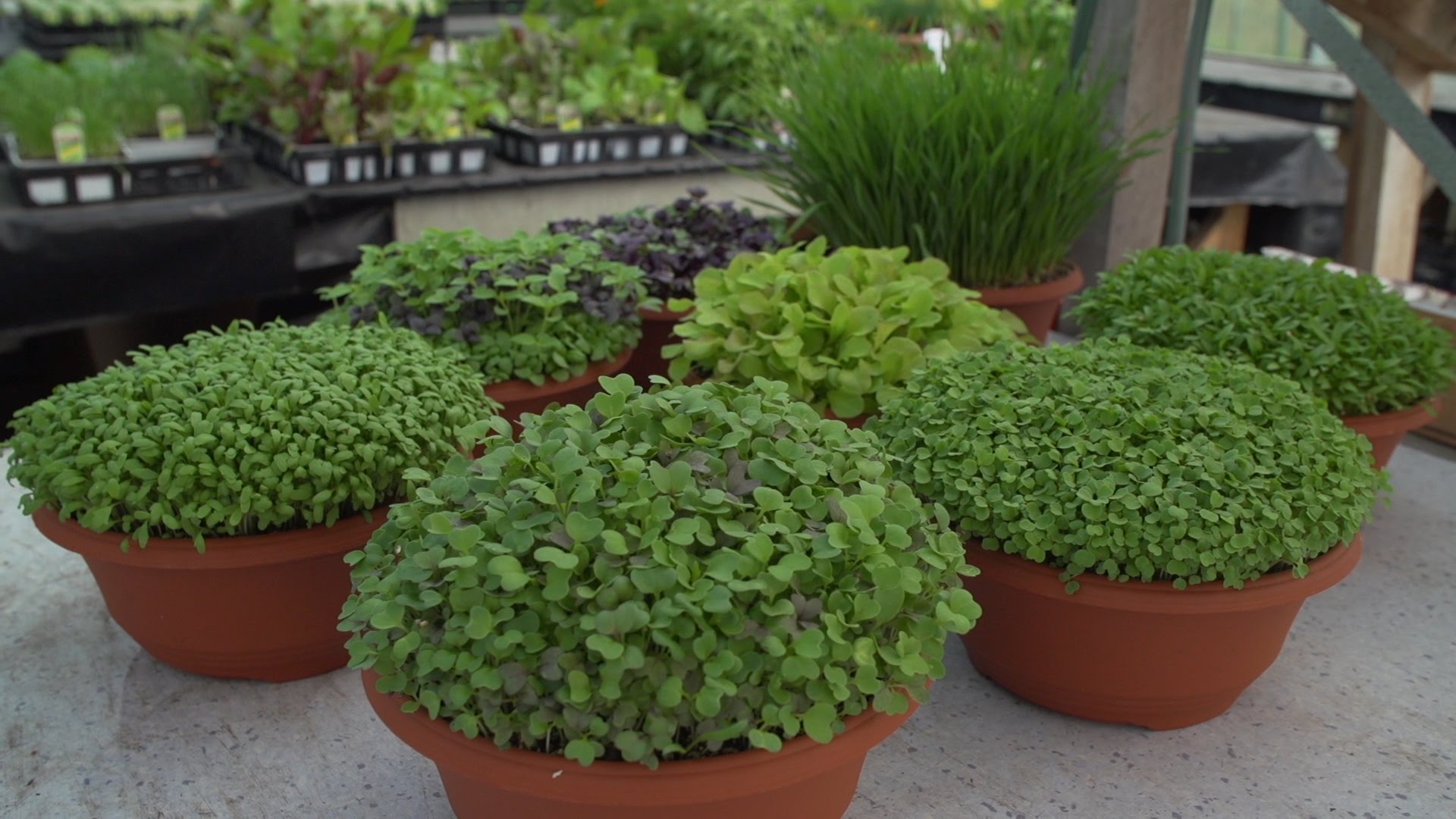How To Become More Self-Sufficient Without Starting a Full-Blown Farm…
Want to start preserving your harvest, making your own soap, or building a backyard root cellar — but not sure where to begin? “Homesteading Advice” gives you instant lifetime access to 35+ practical homesteading books on food preservation, veggie gardening, DIY natural cleaning products (save over $250 per year with this skill alone), brewing, off-grid energy, and a whole lot more…
Click Here To Check It Out Now!
It’s hard to grow good lettuces in the heat of summer – they dry out easily, and become hard and slightly bitter in taste. They grow best in spring and autumn, but if you are growing lettuce in summer it’s best to find a spot that gets some shade for part of the day.
Microgreens are a good alternative any time but particularly when it’s hard to grow lettuces. Microgreens are ready in 10 days or less, they’re always tender and fresh and they’re jam-packed with nutrients.
Choose a container that has lots of holes in the bottom for drainage. Fill the container with a good potting mix, to which we recommend you add seaweed fertiliser and rock dust. The more nutrients in the soil, the more nutrients there’ll be in your plants. That’s why microgreens are better for you than sprouts which are grown in just water. Buy your microgreen seeds in bulk from places like Kings Seeds. Keep them in the fridge at least 2 weeks before sowing to aid with germination.
Sprinkle seeds thickly over the potting mix, and press down firmly. You can cover the seeds with a substrate like vermiculite but not potting mix. In fact we don’t recommend you use vermiculite with cress and rocket because it sticks to the seedlings. The seeds are perfectly fine with nothing over them.
Water well, cover with a damp cloth, and put in a shady spot to germinate. Check the pots every day and water as necessary. Once germinated take the cloth off.
Growing wheatgrass:
Use a similar container as for microgreens and the same growing medium (see above). Purchase wheat seeds from the bulk bin in an organic store and remember to refrigerate them for two weeks before sowing.
Sow seeds very thickly and press down firmly. Make sure you can’t see any potting mix. Water in well, cover with a damp tea towel and leave in a shady place to germinate. Wheatgrass will take a week to germinate and another week to grow to a good size.
Preparing microgreens:
Microgreens are at their most nutritionally-dense before they get their first true leaf. The first true leaf looks like the second leaf. Cut microgreens in swathes with a pair of kitchen scissors. You can add any other salad vege to microgreens as well as a dressing, or just eat them on their own.
Preparing wheatgrass:
Use a juice like the Oscar or any slow juicer that masticates fruit and veges. A juicer with a centrifugal force puts too much oxygen into the juice which destroys enzymes.
Wheatgrass is one of nature’s wonder foods. It’s often called a complete food because it has protein containing the 8 essential amino acids, a broad spectrum of vitamins and minerals and over 80 identified enzymes. It’s an amazing healer being extremely high in fresh chlorophyll. Chlorophyll helps to regenerate the liver, detoxify and invigorate the body and energise the immune system.
Chlorophyll is effective because it’s similar to hemin. Hemin is part of hemoglobin, the protein portion of human blood that carries oxygen. Surprisingly gluten is not present in wheatgrass, because after germination gluten is broken down into the smaller building blocks needed to create the grass and these smaller molecules are much easier for us to assimilate.
Your first shot of wheatgrass should be small and taken only once or twice a week. It will detoxify your body and as a result you might feel nauseous or headachey. Once or if your body is in good shape, the shot of wheatgrass will give you a real boost.
Check out more information about growing microgreens in the video below…
If you like this idea, be sure to share it with your friends and inspire someone you know. Anything becomes possible with just a little inspiration…

